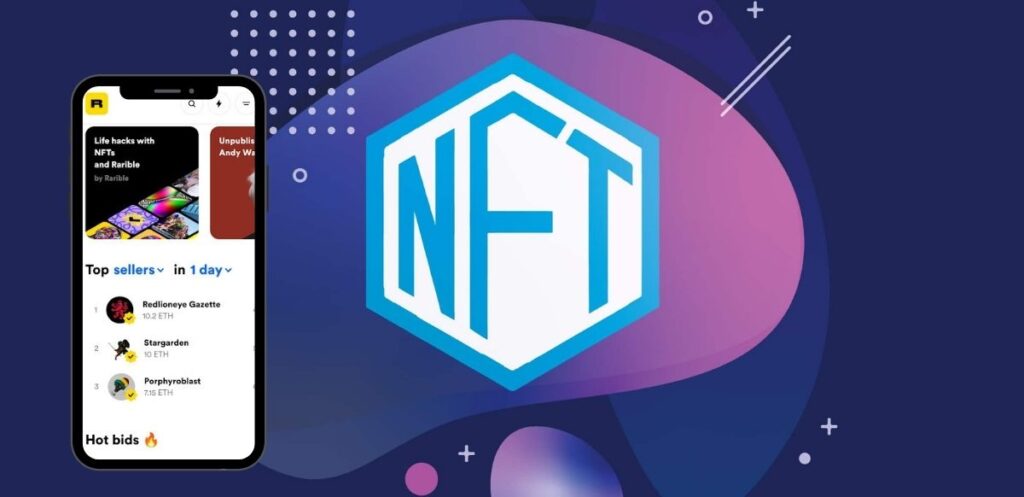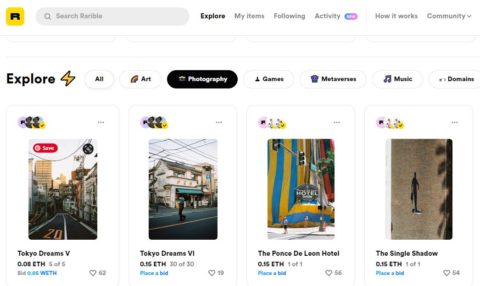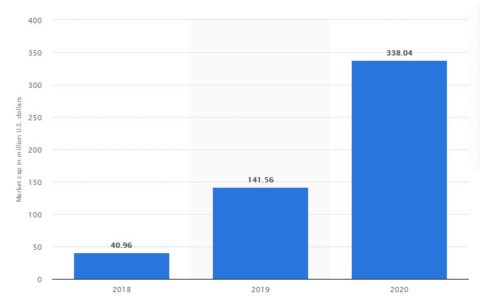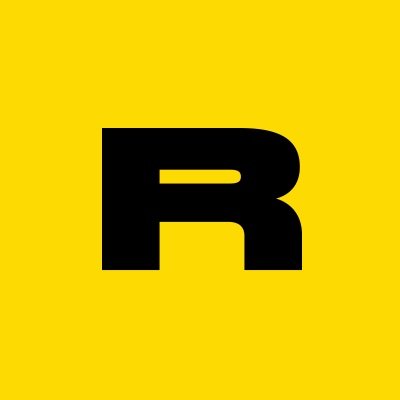Table of Contents
These days, people are so used to seeing something new and exciting emerge and gain popularity at tremendous speed in the tech world seemingly all the time. And it seems impossible to surprise people, who have grown so accustomed to breakthrough innovation. We are all familiar with the likes of blockchain technology and various cryptocurrencies, we all use various marketplaces to buy or sell goods. But how about the combination of the two in enabling the changing of hand of relics and collectibles?
What if I tell you that buying common things is boring and you can become an owner of something truly unique, extremely valuable, artistic and digital? That thing will be tokenized and no one will be able to steal or forge it. It sounds interesting and kind of fictional, right? And yet, it is already real! All you need is an NFT (non-fungible token) and special marketplace where this specific exchange can take place.
Digital images, photographs, 3D models, podcasts, music, texts (like blog posts or tweets), video content or even unique domains – all these things can be turned into an NFT and auctioned off on marketplaces. The owners of those things earn hundreds, thousands or even millions of dollars. For example, the very first tweet of Jack Dorsey (best known as being the co-founder of Twitter) was sold this year as an NFT for $2.9 m.
I bet you are already intrigued and eager to discover everything about NFT, why it is trending, what NFT marketplaces exist, and whether it is possible to develop your own one. So let’s wait no further and proceed to this interesting topic right away. We’ll cover all those aspects and even more!
What is NFT?
To begin with, let’s speak about non-fungible tokens and what differentiates them from regular cryptocurrency ones. A non-fungible token is a unique unit of data located in a blockchain. NFT certifies that a digital object is a unique asset and that its is not interchangeable.
If one unit of a cryptocurrency has the same value across the monetary base of owners, however volatile it might be, the NFT, on the other hand, is a unique token with its unique value that cannot be replaced, replicated or stolen.
Each NFT is one of a kind, it is not an interchangeable thing. NFTs are used to represent real objects of art, intellectual property, digital property, financial instruments, etc. Here are some key aspects that define NFTs:
- Authenticity – NFT must have an owner and the ownership should be possible to verify.
- Originality – each NFT is unique and it contains its own set of metadata.
- Integrity – you cannot divide NFTs into parts like you can with cryptos.
- Unique value – one NFT is not equal to another and they cannot be exchanged for one another at parity.
- Place of existence – NFTs exist in a blockchain and they can create new markets and forms of investment.
What NFT is for?
You may be wondering why we actually need NFTs and how they work. So let’s clear this up. Non-fungible tokens help acquire and give rightful ownership of digital objects. And when you buy something in the form of a token, you get a special smart contract that contains all identifying information about that NFT, including its unique value and originality.
Where and how to buy/sell NFTs?
Non-fungible tokens can be easily purchased on special marketplaces. There are so many of them that you can even find specialized ones like Valuables where people auction tweets, Neuno where you can buy fashion collectibles. There are also such popular and well-known marketplaces as OpenSea, Rarible, Nifty Gateway, MarkersPlace, Superrare etc.
Image source: Rarible
We will discuss all advantages and functionalities of NFT marketplaces a bit later in this article. And now let’s get back to the procedure of selling and buying NFTs. So basically you go to an applicable online marketplace [of choice], find an item that you’d like to buy and proceed with purchasing it. However, the fees can be tricky.
First of all, some marketplaces will charge you for energy required to complete blockchain transactions. Also you should not forget that most NFTs can be purchased not for dollars, but for Ethereum. So the conversion may require an additional fee, and not only that, you can also get unlucky or feel uncomfortable with the USD/Ethereum exchange rate, especially considering the weakness of the dollar, and, more importantly, sky-high valuations of the crypto world of late, including Ethereum’s market cap.
As you’ve most probably understood, it is very easy to acquire an NFT, but what’s arguably even more exciting is that it is equally easy to sell it. Although various marketplaces have different rules, the general process is simple. If you own a creative digital product of special value, you go to a marketplace, upload your product and then follow all instructions carefully to turn it into a non-fungible token. You add an enticing description, set a starting price (if it is an auction) or set a fixed price otherwise, and wait for a notification from a buyer or buyers in case of auctions, which is arguably even more exciting.
How can you make an NFT?
All NFTs can be created only on special marketplaces and then get sold there. But to create an NFT you should have not only a digital product, but also a digital wallet with some Ethereum coins in it.
The procedure of “tokenization” is very simple and requires a minimum amount of effort from your end. You just add all required information, upload your piece of art, song, domain, photo or whatever else you might be trying to monetize, and wait for people who will be interested in bidding and buying out your NFT.
Why are NFTs trending?
The awareness and popularity of NFT skyrocketed in the last 3 years. In 2020, the global volume of transactions that involved non-fungible tokens was $338 million, which is more than impressive, taking into account that in 2019 it was only $141 million. To help visualize this evolution, here is how the year-over-year growth of the NFT market looks like through a barchart:
Image source: Statista
This rapid growth tendency makes people consider investing in NFT marketplace development. Why is that a promising business opportunity? First of all, at the moment NFT seems very trendy and appealing to people all over the world, and they are ready to actively participate in bidding and buying digital pieces of art. What does that mean? Only that NFT marketplaces benefit drastically from sales.
Let’s take the OpenSea marketplace as an example that proves our point. Monthly NFT sales on OpenSea reached $95.2 million in February while in January it totalled only $8 million. If this doesn’t seem like rapid growth, then what does? NFT is more than just hype, it is a trend that will stay with us for the years to come.
People buy artworks, unique collections of music videos or pictures, characters of video games, short clips and even virus gif memes like “Nyan cat”. They are ready to invest enormous amounts of money to possess something that is one of a kind, something that is attention grabbing and actively discussed.
NFTs are great for both authors of digital works and people who purchase them. While the first get a chance to properly monetize their works, the latter get to more easily confirm their ownership status of their prized investment or possession, whatever it is in the eye of the beholder. It is definitely a win-win situation!
And as to the NFT marketplaces, they earn their money by charging various fees like the “gas” fee paid for energy to complete transactions, or standard fee for placing a digital artwork for sale (it can be $70-$100 or more depending on the marketplace).
The most famous pieces sold as NFT
We’ve already mentioned a couple of things that were sold as NFT tokens for a great deal of money. And now we’d like to share with you some even more interesting examples of deals that are worth millions of dollars, and that closed on NFT marketplaces. Ready to explore? Then watch this video:
As you can see, there are so many different things that can be sold as NFT. But what surprised us most is how Cryptokitties NFTs became a huge sensation and everyone wanted to buy a virtual cat. This is a blockchain-based game that lets you buy, breed, and then trade virtual kittens. It sounds like a fun game for kids, except for the fact that rich adults like it better and are ready to spend thousands of dollars on virtual pets.
Who knows what digital object can become the next Cryptokitties ($100,000 for a virtual cat), Nyan cat ($561,000), Crossroads ($6.6 million), or Everydays ($69 million). Looking at all sold pieces, we can say that the NFT power is astonishing.
Is going the NFT way risk-free?
You may be wondering if NFT has any potential risks, we’ll tell you the truth without trying to sugarcoat it. Yes, NFT selling is risky, because there are chances of fraud and there is no real guarantee that you are buying something valuable. People can create an NFT of something that is worth nothing, thereby creating something out of nothing and selling that token without any issues.
Also, there are no exact regulations that can help people appraise assets correctly. And what about the situation when a digital asset creator goes out of “business” and stops hosting digital products the NFT points to? It seems like now the token itself and the asset it is linked to are not a so-called unity.
However, these risks should not scare you off if you want to develop your own NFT marketplace. Since the NFT market is very promising and can contribute greatly to the online economy, we can predict that all necessary regulations will be introduced with time.
What is an NFT marketplace?
NFT marketplace is a platform that allows you to store and trade non-fungible tokens effortlessly. In most cases the tokens can be either auctioned or purchased at fixed prices. To use NFT marketplace, its users have to possess a crypto wallet to complete transactions and store their currency (in most cases it’s Ethereum).
Any of the NFT marketplaces lets you create an account, upload digital products and complete sales. There are common NFT marketplaces and there are niche ones that specialize in a particular kind of digital artworks. For example, there is such a marketplace called Looking Glass Factory where you can trade only holograms.
We should mention that niche marketplaces became more popular among people than common ones, because they specialize in selling specific digital artworks, have well-defined target audience and provide everything that customers may need.
How NFT marketplace functions
To use any of the NFT marketplaces, you need to sign up and connect your crypto wallet to your account. Once you’ve done it, there are a couple of steps left:
- You need to create an NFT and specify all desired parameters (price, description, etc.).
- List your digital item for sale and wait till the moderation is completed.
- Then the auction takes place and buyers place their bids.
- Once the auction is finished, the transfer of digital product and cryptocurrency takes place. It is performed by an NFT marketplace.
All NFT marketplaces use smart-contracts that are special transaction protocols regulating the relations of two involved parties. In this case the parties are the buyer and the seller. These smart-contracts are generated in a form of code that is placed in a blockchain. The smart-contracts also contain identifying information related to a non-fungible token. So the procedure of selling and buying tokens is really easy and user-friendly.
Best examples of NFT marketplaces
Now that you understand the key principles of NFT marketplace work, let’s take a look at a couple of great examples of such platforms and what actually makes them so good.
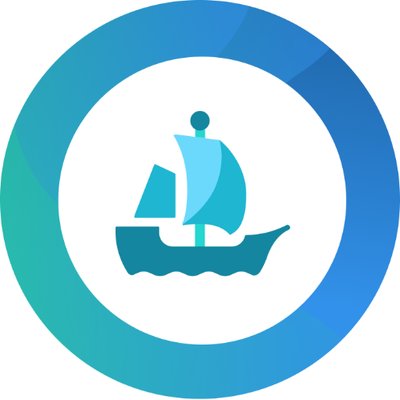
Rarible
Rarible is the first community-owned trading platform where you can easily sell and buy NFTs. There is even a native governance token called $RARI that is used on this marketplace to reward active users. That’s quite an innovative approach that contributes to the further development and improvement of Rarible platform. On Rarible you can purchase music, game cards, domain, art, metaverses elements. You can also check out the most successful buyers and sellers and take a look at incredible tokens collections.
Custom NFT marketplace development
We guess that by this point you may be so inspired and ready to start the development of your own custom NFT platform. After all everything migrates to the digital world – art, games, collections of valuable pieces. And where there is a demand there should be a solution able to fulfill it and bring you an additional income.
So to help you understand where you should start, what technologies to use, and what features to incorporate, we have collected some great tips. Altamira is an experienced developers team that worked on numerous projects related to blockchain and trading. Keep reading to discover what it takes to build your own NFT marketplace.
Where should you start
The first thing of utmost importance is to find your developers team. This team should be experienced enough in the field of blockchain and be able to incorporate complex features into your solution. While many things can be incorporated thanks to SDKs, their capabilities are rather limited, so it is better to develop custom features.
Before choosing your development partner, check out their industrial expertise, examples of real works and precious reviews left by their clients. Also make sure that the team you are going to work with has the following specialists:
- Business Analyst;
- UI/UX Designer;
- Software architect;
- Front and back-end developers;
- QA engineers;
- Scrum Master.
Thanks to their work your project will go through each development phase smoothly and you’ll end up having a top-notch NFT marketplace. The development itself will include:
- NFT marketplace prototyping and design;
- Development of the smart-contract protocol;
- Front-end coding;
- Testing of the solution;
- Marketplace release and maintenance.
These days SaaS (software as a service) development is becoming extremely popular, because you can host your solution on the vendor’s infrastructure. It reduces costs, allows to get a more scalable and flexible solution, and to perform its remote management. SaaS model can also be applied to NFT solutions.
General standards
When you are building an NFT marketplace, it is important to follow several key standards that define a good project. So basically your NFT platform should be secure, transparent, and decentralized.
Since your solution deals with financial operations, security should be your top priority. Blockchain is rather reliable technology, however, don’t forget to take care of some internal means of security for your marketplace. The features may be different – there can be tools for detecting malicious activity, additional tools for checking tokens authenticity, instruments for profiles verification, etc.
Our Expert claims
When we speak about transparency we mean a transparent process of payment that will be free of errors and unexpected failures. Blockchain is perfect for this since cryptocurrency transactions run smoothly. On top of that, you will be able to see a clear picture of all transactions that took place on your NFT platform.
As to the decentralization, your platform should not keep transactions related data in one centralized place. It is better to copy it and distribute over a network of machines. Decentralization helps to prevent major data loss in case of a serious hacker attacks. Since the data is added in new blocks, chances are that the damage of attacks will be minimal.
Key features to consider
Whatever NFT marketplace you are building – a general or a niche one, you need to incorporate a solid set of features to attract your target audience and make them stay with your solution. We have compared several NFT marketplaces, explored in detail their options and are now ready to present a must-have range of features.
Apart from all great features that it is possible to add, you can also make your NFT platform more versatile by developing it in multiple blockchains – Ethereum, Flow or others.
To use SDKs or to build custom NFT marketplace?
It’s not a secret that many NFT marketplaces offer their own SDKs. By using them you can create your own similar solution where the infrastructure will be like in an existing solution but the design will be yours. For example, if you like OpenSea marketplace, you can take advantage of its SDK, build functionally similar solutions wrapped in your beautiful custom design.
It seems that this option is perfect – it allows you to create various options, you don’t need to deploy smart-contracts, you have many ready-made blocks that let you speed-up and simplify the development process. All you need is a blockchain specialist and a couple of experienced technicians able to work with SDK setup. However, everything is not so great when it comes to customization and flexibility.
Off-shelf blocks and elements are not always suitable for your particular project model. If you need a niche solution, then you may face a lot of difficulties trying to customize it or expand its functionality.
That is why it is better to select custom development and work with a cohesive team like the Altamira one. Only custom-made solutions can fully meet all your requirements, and only experienced developers can make a flawless NFT platform that will last you for years.
The advantages of working with software developers are obvious. Your idea will be shaped and turned into a well-defined project plan. Every feature will be well-thought-out and correctly implemented. The back-end part of the solution will be custom and will let you generate smart-contracts effortlessly. The design will also be a unique one able to emphasize your brand identity.
Also development teams like ours have experience in working with blockchain solutions and are familiar with the possible challenges something like this can pose and how to manage ones that prop up on the go. Hence, neither your time, nor your budget will be wasted. You will get exactly what you wanted on time and you will also benefit from the maintenance option that will let you improve your NFT marketplace in the future and keep it competitive.
Tech stack we use and custom development cost
For all those who made a final decision to build their own custom NFT marketplace from scratch, our expert Evgeniy is ready to provide valuable tech-related advice. He recommends to use the following technologies and tools to get a versatile NFT platform:
- React,js for front-end part of the solution;
- Node.js + Express.js for the back-end coding;
- Gitlab CI + Docker to store the code and CI;
- PostgreSQL will be a perfect database for an NFT solution;
- AWS (EC2, S3, RDS) are great for hosting and services.
Also if you are planning to accept cryptocurrencies on your NFT marketplace, then you may need an experienced blockchain specialist or consultant to make everything right and avoid issues in the future.
To end up having a highly functional and feature-rich NFT marketplace, you need to hire a cohesive team of developers like Altamira. A team like ours will perform a full development cycle, and will partner with the most experienced blockchain specialist. Don’t forget about the market research and correct targeting (if you are building a niche solution, explore your competitors solutions thoroughly).
And now let’s proceed to no less important aspect – the approximate development cost. As you can see building an NFT marketplace is a serious commitment that will definitely require solid investment. The final development sum will depend on the overall platform functionality and complexity. It can be $50,000-$100,000 or even more.
If your budget is limited and you hesitate to start the development, we’d say that you should not be worried. Don’t put your idea aside and benefit from MVP development. You will get a great function platform that can be further improved, and its functionality can be extended drastically with time.
FAQ
To summarize
You don’t need to be a fortune teller to know that in the future so many things will enter the digital world and stay in it. Various forms of art, different collectibles, creative assets and many more things will end up having valuable digital versions. And people will definitely want to sell and acquire all those digital assets. That is exactly when all NFT marketplaces start prospering to the fullest.
The NFT trading cannot be called a new phenomenon, it appeared several years ago and since that time started developing really fast and contributing greatly to worldwide digital sales. So while the niche is not overcrowded, it is high time to enter it with your custom NFT solution for selling digital objects. Find your team and turn your idea into a real money-making project today, to benefit from it in the future!


